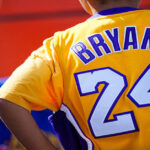Few teams in professional basketball generate more year-round buzz than the Los Angeles Lakers. Even in seasons when the team is performing well, fans and analysts constantly analyze potential moves, speculate about which stars might land in purple and gold, and debate front office strategy. “Lakers trade news” has become more than just sports updates; it is practically its own branch of NBA media conversation, fueled by decades of blockbuster trades, star-driven roster construction, championship expectations, and the global popularity of the franchise. Understanding Lakers trade news requires much more than checking headlines. It demands knowledge of NBA rules, salary cap details, trade negotiations, timing, roster construction, and how decisions inside one of the biggest basketball organizations are shaped by pressure, fan expectations, financial goals, and the pursuit of championships. This article offers a comprehensive 3000-word guide to how Lakers trade news works, why it captures so much attention, how trades are evaluated, the roles of management and coaching, and what factors determine whether deals are realistic, beneficial, or primarily media speculation.
1. Why Lakers Trade News Is Always Active
The Los Angeles Lakers are a brand that transcends sports. Their history includes legends, dynasties, championships, MVPs, and Hall of Fame players. Unlike small-market teams that may rely on steady draft development or incremental roster improvement, the Lakers operate under constant expectation of success. This leads to several realities:
- Fans expect stars, not patience.
Lakers fans are accustomed to superstars, deep playoff runs, and championship aspirations. A rebuilding phase rarely lasts long, because pressure—internal and external—pushes the front office to act aggressively. - The market amplifies coverage.
Los Angeles is a major media city. Every rumor, whether realistic or not, receives enormous attention. When a player anywhere becomes unhappy, the phrase “could the Lakers make a move?” inevitably enters media speculation. - The Lakers have a history of major trades.
Their past deals—from Kareem Abdul-Jabbar to Pau Gasol to Anthony Davis—proved that blockbuster trades can shift the power balance of the NBA. This reputation creates expectation that big deals are always possible. - Stars are drawn to the brand.
Many players want to win in Los Angeles, and that reality keeps the Lakers in conversations even when a trade is unlikely.
Because of all this, Lakers trade news never disappears. It becomes a narrative that dominates mid-season, postseason, and even off-season discussions.
2. How Lakers Trade Decisions Are Made
Understanding trade news requires an understanding of how decisions happen inside the franchise. Trades are not made based on media rumors or fan excitement. The process involves structured decision-making, including scouting, financial evaluation, coaching assessments, ownership approval, and negotiation procedures.
A. Front Office Leadership
The General Manager and President of Basketball Operations guide trade strategy. Their responsibilities include:
- Evaluating roster strengths and weaknesses
- Identifying available players through internal scouting
- Managing salary cap strategy
- Negotiating with rival front offices
Success depends heavily on accurate analysis rather than hype.
B. Coaching Input
The coaching staff plays a major role, even though they do not finalize trades. Coaches evaluate whether a player fits:
- System needs
- Defensive schemes
- Locker room culture
- Team strengths and weaknesses
If a coach feels a player may disrupt chemistry or reduce defensive stability, the front office may reconsider their pursuit.
C. Player Evaluation Metrics
Before engaging in trade negotiations, the Lakers analyze:
- Age and durability
- Contract length
- Salary relative to production
- Skill fit alongside current stars
- Upside vs. decline
- Training and development requirements
Numbers matter, but so does feel. Sometimes a player looks perfect statistically but does not fit personality-wise.
3. The Role of Salary Cap and Trade Rules
NBA trade rules strongly influence Lakers trade news. Fans often imagine deals that are not legally possible due to salary cap restrictions. Understanding these rules explains why certain deals never advance past speculation.
Table: Key Salary Rules Affecting Lakers Trades
| Rule | Explanation | Impact on Lakers Trade News |
|---|---|---|
| Salary Matching | Teams trading players with guaranteed contracts must match salaries within a percentage based on cap rules | Prevents unrealistic “star-for-minimum-salary-player” trade ideas |
| Hard Cap Scenarios | Certain offseason moves trigger a spending limit that cannot be exceeded | Limits ability to stack expensive contracts |
| Bird Rights | Allows teams to exceed cap to re-sign their own players | Influences whether Lakers trade or extend players |
| Rookie Scale Contracts | Young players have set salary numbers based on draft position | Makes young players valuable in matching tools |
| Trade Exceptions | Created when trading a player without taking equal salary back | Can be used to acquire players later |
Because the Lakers often have star players with high salaries, matching contracts becomes complex. Often, a potential trade rumor fails simply because the numbers cannot legally work.
4. Why The Lakers Are Linked to Every Player Available
Every year, when a star becomes restless or a team shifts direction, Lakers trade news surges. Fans joke that every top player in the league is “linked to the Lakers” at some point. There are several reasons:
- Star Power Culture
The Lakers have a long-standing identity built around acquiring legends. This perception means that fans and analysts expect the Lakers to be interested in every big name. - Agent and Media Influence
Sometimes rumors originate not from the Lakers but from agents using the team as leverage. Suggesting “the Lakers are interested” can pressure another franchise to increase offers. - Team Needs Become Public Knowledge
If the Lakers need shooting, defense, ball-handling, or size, analysts begin looking at available players who provide these traits. Their speculation feeds the news cycle. - Fan Base Engagement
Lakers rumors drive traffic, views, comments, and engagement. Therefore media outlets have financial incentive to discuss Lakers storylines.
That does not mean every rumor is serious. In fact, only a small fraction are based on real negotiations. Understanding this helps separate speculation from reality.
5. Evaluating Whether a Lakers Trade Is Realistic
Fans can evaluate trade ideas logically by checking four factors:
1. Salary Matching
If the numbers cannot match under league rules, the deal is unrealistic.
2. Asset Balance
To receive a star, the Lakers must give valuable assets in return. If the proposed deal is one-sided, it likely fails.
3. Motivations of Other Teams
Trade only happens if both sides benefit. If the other team has no incentive to move their player, the rumor is likely imaginative.
4. Timing
NBA trade windows are limited:
- Regular season until trade deadline
- Off-season before training camp
- After certain contract dates finalize
Rumors outside these windows rarely carry substance.
6. How Trade Rumors Spread
Trade news often spreads in predictable stages:
- Observation
Analysts detect weaknesses in the Lakers roster or identify a player who could fill them. - Speculation
Media personalities begin proposing possible targets. - Rumor Development
A reporter states that the Lakers are “interested” in a player. This does not mean negotiations are happening—it often reflects internal scouting or standard inquiry. - Fan Interpretation
Social media expands the rumor rapidly, sometimes exaggerating its seriousness. - Actual Reporting
If negotiations begin, insiders may report “trade discussions,” “offers exchanged,” or “serious talks.” - Resolution
The trade either happens or interest fades as circumstances change.
Understanding this cycle helps fans analyze Lakers trade news realistically.
7. Types of Players the Lakers Commonly Pursue
Historically, the Lakers seek players who fit championship-level needs. These include:
- Two-way wings capable of defending and hitting shots
- Veteran ball-handlers who reduce workload on stars
- Rim protection and interior presence
- High-IQ role players who perform within structured systems
The exact targets shift yearly, but the philosophy remains consistent: build around star talent with reliable, predictable, playoff-ready contributors.
8. The Impact of Team Performance on Trade News
Lakers trade news intensity varies depending on how the team is performing.
A. When the Team Is Winning
Trade pressure decreases because:
- Chemistry appears strong
- Fans are satisfied
- The front office maintains continuity
However, even in success, minor upgrades may be explored.
B. When the Team Is Mediocre
Rumors spike dramatically. Fans and media urge moves because expectations for the franchise are always championship-level.
C. When the Team Is Struggling
Trade chatter can dominate headlines. Every segment of the organization comes under scrutiny:
- Coaching
- Player effort
- Front office decisions
- Roster construction
This is why Lakers seasons always feel high-stakes.
9. How the Lakers Value Their Young Players in Trades
When the Lakers have young talent, trade debates become complicated. Fans are often split:
- Some want to develop young players into future stars
- Others want to use them as trade assets for proven talent
The Lakers evaluate young players based on:
- Ceiling
- Development timeline
- Contract value
- Fit with existing stars
- Trade market demand
Not every young player is developed internally. Some become trade pieces to accelerate timeline.
10. Superstars and the Reality of Trading for Them
A key reason Lakers trade news remains heated is that fans always dream big. They imagine the next franchise-defining superstar arriving through a major deal. But these trades are complex. To acquire a superstar, the Lakers must:
- Have assets the opposing team wants
- Balance the salary cap
- Construct a competitive roster after the trade
- Account for long-term contract effects
Historically, the Lakers have succeeded when they acquire a star who:
- Elevates the franchise
- Attracts additional talent
- Aligns with team vision and timeline
11. Examples of Trade Types the Lakers Execute
A. Star-Acquisition Trades
Used to pair superstars and pursue titles immediately.
B. Role-Player Upgrade Trades
Focus on filling specific weaknesses:
- Shooting
- Defense
- Bench scoring
C. Salary-Management Trades
Designed to free cap space or avoid tax penalties.
D. Development-Oriented Trades
Acquire young talent or draft assets for future planning.
Trade news often focuses heavily on the first category, but the others are equally important to building a sustainable roster.
12. Behind-the-Scenes Negotiation Strategy
Trade talks are complex, rarely simple one-call exchanges. Negotiation includes:
- Multiple phone calls
- Exploratory discussions
- Counterproposals
- Asset rebalancing
- Future pick protections
- Deadline leverage
The Lakers must manage internal deadlines and determine how much they are willing to give up without compromising core stability or future potential.
13. The Trade Deadline and Why It Matters
The trade deadline intensifies media attention because teams:
- Rush to complete deals
- Decide to push for a title or retool
- Explore fire-sale moves
- Adjust for injuries
For the Lakers, deadlines often become pivotal turning points. Many of their midseason trades historically reshape playoff success.
14. Fan Psychology and Trade Reactions
Lakers trade news is heavily shaped by fan passion. Reactions often fall into patterns:
- Optimistic fans believe every rumor is close to reality
- Skeptical fans demand trades be financially or strategically logical
- Emotional fans react strongly to player departures
Understanding trade realism versus enthusiasm helps balance analysis.
15. How Media Shapes Lakers Trade Perception
Because the Lakers drive global attention, media coverage is intense. Analysts and insiders often:
- Debate hypothetical trades
- Project possible roster targets
- Evaluate front office performance
- Publish reports based on sources or league whispers
Not all reporting is equal. Fans should differentiate:
| Type of Report | Meaning |
|---|---|
| Official trade announcement | Deal is completed |
| Serious ongoing negotiation report | Teams are exchanging proposals |
| Exploratory interest report | Internal evaluation or basic inquiry |
| Speculative media discussion | Not driven by official information |
Understanding this difference prevents misinterpretation.
16. Coaching Impact on Trade Direction
Coaches influence trade conversations by:
- Requesting specific skill sets
- Identifying lineup weaknesses
- Recommending depth adjustments
- Supporting or discouraging personalities
A coach may value role players, ball movement, defense, or shooting differently than fans do. Thus the coaching system often directs the type of players targeted.
17. Long-Term Effects of Trades
Trades have consequences beyond immediate performance. They affect:
- Future draft pick availability
- Salary flexibility
- Team chemistry
- Developmental minutes for young players
- Management legacy
Good trades strengthen the franchise identity; bad trades can set progress back years.
18. Conclusion
Lakers trade news is more than gossip. It represents a complex relationship between fan expectations, organizational decision-making, financial rules, coaching strategy, negotiation science, and long-term planning. Because the Lakers are a franchise defined by stars, winning, and global attention, trade conversations remain constant. Understanding salary rules, negotiation structure, media influence, team needs, and operational detail allows fans to approach Lakers trade news with knowledge rather than speculation. Whether a blockbuster deal occurs or the team opts for continuity, trade discussions reflect the ongoing quest to maintain excellence within one of the league’s most iconic organizations.
Frequently Asked Questions (FAQs)
1. Why is Lakers trade news always so popular?
Because the Lakers are a global franchise with championship expectations, fans and media constantly expect major moves.
2. Do most Lakers trade rumors represent real negotiations?
No. Many rumors are speculation or interest reports rather than actual deals being discussed.
3. What stops the Lakers from making certain trades?
Salary cap rules, lack of matching assets, opposing team motivation, and roster fit can all prevent deals.
4. How can fans tell if a trade rumor is realistic?
Check salary matching, timing, asset equality, and whether the other team would logically make the move.
5. Why are the Lakers linked to almost every star on the market?
Their history, market size, fan interest, and past superstar acquisitions make them central to NBA trade conversations.











